The 2020 U.S. Presidential Race: A Cheat Sheet
The Bern is back.
Vermont’s democratic-socialist senator is running for president again, he announced Tuesday morning. With Joe Biden still waiting on the sidelines, Sanders immediately becomes the highest-profile Democrat in the race—even though, as his detractors like to point out, he’s actually an independent who caucuses with the Democrats in the Senate. Given Sanders’s strong showing in the 2016 race, it was easy to think of his second run as a foregone conclusion, but Sanders hesitated before jumping into the already crowded field of Democratic contenders.
Some pundits deemed Sanders the 2020 Democratic frontrunner as early as 2017, but there are plausible cases for both a positive and negative outlook. For the former, Sanders has shown that he can run a big-time campaign and draw astonishing grassroots support and fundraising. And while Sanders’s campaign centered around his sometimes meandering, hectoring advocacy for leftist policies, he proved able to turn his gruffness into a sort of anti-charisma that captivated many Americans. There’s no reason to believe any of that has changed in the last few years, and this time there’s not an anointed party pick like Hillary Clinton in his path. Moreover, Sanders showed that anyone underestimating him does so at his or her own risk.
On the other hand, Sanders’s last bid showed some of his limitations. He proved slow to connect to the minority voters who comprise a growing portion of the Democratic electorate. Generally, the campaign seemed somewhat chaotic and insular, and was slow to handle allegations of sexual harassment among staffers. Sanders will be 78 years old on Election Day 2020, which would make him the oldest nominee in history. Perhaps the biggest problem is that while Sanders was running against a Clinton machine that offered many reheated policy ideas, there are now a host of candidates running who have taken inspiration from Sanders himself. There’s Elizabeth Warren (who Sanders encouraged to run in 2016, only to jump in when she declined), and even some of the more centrist candidates, like Kamala Harris and Cory Booker, have turned left. Sanders will have to compete with more candidates sharing some of the same policies.
Given his success in 2016, anything short of the nomination will seem like a disappointment for a Sanders campaign. Yet the senator has always been adamant that his political career is about furthering his policy ideas and creating a more equitable society. Even if Sanders can’t win or even match his vote totals from the last cycle, the overall shape of the race and of the Democratic Party show he’s already succeeded.
Sanders isn’t the only New Englander to join the race in the last week. On February 15, William Weld announced plans to form an exploratory committee to challenge President Donald Trump for the 2020 GOP presidential nomination. “I think our country is in grave peril and I cannot sit any longer quietly on the sidelines,” Weld said. “Our president is simply too unstable to carry out the duties of the highest executive office in the land.”
There are more than 20 likely or potential Democratic candidates, some of whom are already campaigning hard. Weld could be joined by other Republicans, and there will be independent candidates and third-party contenders as well. If you thought keeping track of the race four years ago was hard, we have bad news for you. But we also have a handy, always informative, and occasionally serious guide to all those candidates.
As the presidential primaries progress, this cheat sheet will be updated regularly.
* * *
The Democrats

(Yuri Gripas / Reuters)BERNIE SANDERS
Who is he?
If you didn’t know the Vermont senator and self-described democratic socialist before his runner-up finish in the 2016 Democratic primary, you do now.
Is he running?
Yes. Sanders announced plans to run on February 19.
Why does he want to run?
For the same reasons he wanted to run in 2016, and the same reasons he’s always run for office: Sanders is passionate about redistributing wealth, fighting inequality, and creating a bigger social-safety net.
Who wants him to run?
Many of the same people who supported him last time, plus a few converts, minus those who are supporting Sanders-adjacent candidates like Elizabeth Warren, Sherrod Brown, or Tulsi Gabbard.
Can he win the nomination?
Possibly. He didn’t last time around, and while this time he has more experience and renown, he also has more competition from candidates inspired by his success.
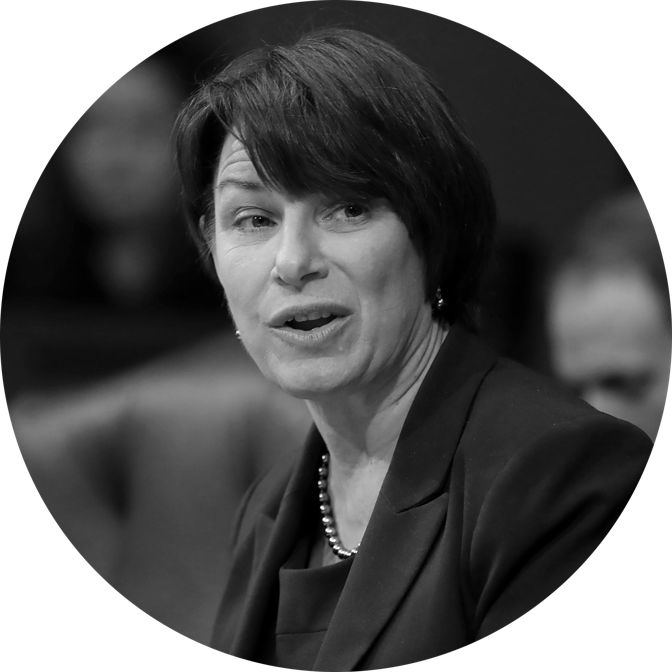
(Aaron P. Bernstein / REUTERS)AMY KLOBUCHAR
Who is she?
She has been a senator from Minnesota since 2007.
Is she running?
She announced plans to run in Minneapolis on February 9.
Why does she want to run?
Klobuchar represents a kind of heartland Democrat—progressive, but not aggressively so—who might have widespread appeal both in the Midwest and elsewhere. She’s tended to talk vaguely about middle-class issues.
Who wants her to run?
She’d probably build a constituency among mainstream Democrats. Her exchange with Justice Brett Kavanaugh during his confirmation hearing won her a lot of fans.
Can she win the nomination?
Maybe! CNN’s Harry Enten rates her one of the most “electable” potential candidates, a trait that Democratic voters are especially fixated on this cycle. Her launch has been tarnished by a series of stories about harsh treatment of staff, though.
What else do we know?
Sadly, she is not using this fly logo.
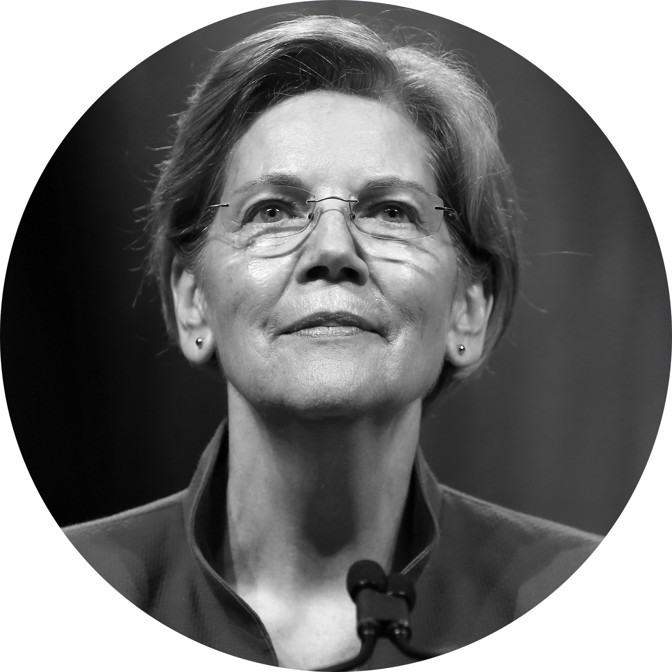
(Jonathan Bachman / Reuters)ELIZABETH WARREN
Who is she?
A senator from Massachusetts since 2013, Warren was previously a professor at Harvard Law School, helped create the Consumer Financial Protection Bureau, and wrote a book on middle-class incomes.
Is she running?
Yes. She kicked off her campaign on February 9.
Why does she want to run?
Warren’s campaign is tightly focused on inequality, her signature issue since before entering politics. She has proposed an “ultra-millionaire tax” on people worth more than $50 million and a major overhaul of housing policies.
Who wants her to run?
People who backed Senator Bernie Sanders in 2016; people who were Bernie-curious but worried he was too irascible; people who didn’t like Bernie but are left-curious; Donald Trump.
Can she win the nomination?
Who knows? Warren’s platform is in step with the current Democratic Party’s, and her initial Iowa events went well. But she has also underperformed Democratic presidential nominees even in her super-liberal home state, and her handling of a DNA-test reveal to show her claimed Native American heritage was widely seen as a botch.
What else do we know?
She’s got a good doggo.
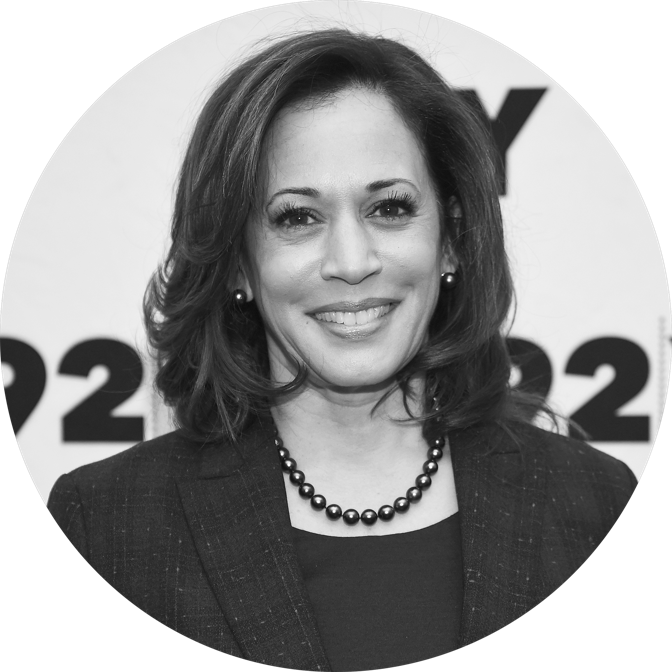
(Dimitrios Kambouris)KAMALA HARRIS
Who is she?
Harris, a first-term senator from California, was elected in 2016. She was previously the state’s attorney general.
Is she running?
Yes. She declared her candidacy on January 21, Martin Luther King Jr. Day.
Why does she want to run?
Harris seems to think that a woman of color who is an ex-prosecutor will check a range of boxes for Democratic voters. She has so far staked out a broad platform, trying to appeal to a wide swath of the party.
Who wants her to run?
Mainstream Democrats. She put up immediately impressive fundraising numbers, and she’s enlisted a number of former Hillary Clinton aides.
Can she win the nomination?
Sure, maybe. Harris has impressed in her short time in Washington, but it’s been a short time. Most of the country hasn’t seen her campaign yet.
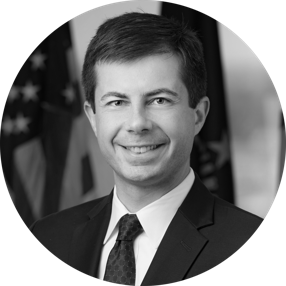
(City of South Bend, IN)PETE BUTTIGIEG
Who is he?
Beats us! Kidding—but Buttigieg, the 37-year-old openly gay mayor of South Bend, Indiana, and a veteran of the Afghan War, is one of the lesser-known candidates in the field.
Is he running?
Yes. He announced an exploratory committee on January 23.
Why does he want to run?
Buttigieg’s sell is all about generation. He’s a Millennial, and thinks that his cohort faces new and unusual pressures and dilemmas that he is singularly equipped to answer. Plus, it’s a useful way to differentiate himself from the blue-haired bigwigs in the blue party.
Who wants him to run?
Buttigieg isn’t really popping up in polls at this point, but he has the support of some Obama alumni. He hopes to reach midwestern voters who deserted the Democrats in 2016.
Can he win the nomination?
Probably not. No mayor has been nominated since New York’s DeWitt Clinton in 1812. Buttigieg also fell short in a 2017 campaign for Democratic National Committee chair.
What else do we know?
It’s “BOOT-edge-edge,” and it’s Maltese for “lord of the poultry.”
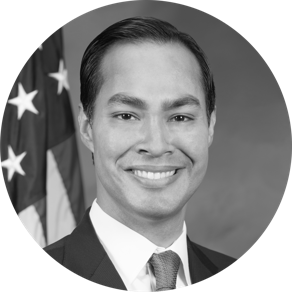
(DEPartment of Housing & Urban Development)JULIÁN CASTRO
Who is he?
Castro was the mayor of San Antonio, Texas, before serving as secretary of housing and urban development under Barack Obama from 2014 to 2017.
Is he running?
Yes. He announced his bid on January 12 in San Antonio.
Why does he want to run?
Castro has long been saddled with the dreaded “rising star” tag, and with Texas still red, he’s got few options below the national stage. He’s emphasized his Hispanic-immigrant roots in early campaign rhetoric.
Who wants him to run?
It’s not yet clear. He’d like to take the Obama mantle and coalition, but that doesn’t mean he can.
Can he win the nomination?
He’s got a tough battle. Four years ago, he seemed like the future of the party; now the stage is crowded with rivals, potentially including fellow Texan Beto O’Rourke. "I am not a front-runner in this race, but I have not been a front-runner at any time in my life," Castro said during his announcement.
What else do we know?
Castro’s twin brother, Joaquin, who serves in the U.S. House, once subbed in for his brother in a parade during Julián’s mayoral campaign, so if you go to a campaign event, ask for proof that it’s really him.
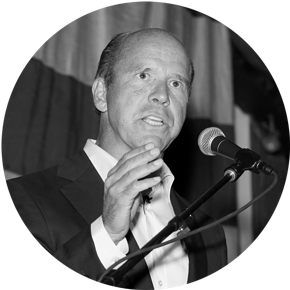
(KC McGinnis / Reuters)JOHN DELANEY
Who is he?
A former four-term congressman from Maryland, he might be even less known than Pete Buttigieg, who at least has a memorable name.
Is he running?
Is he ever! Delaney announced way back in June 2017, hoping that a head start could make up for his lack of name recognition.
Why does he want to run?
Delaney, a successful businessman, is pitching himself as a centrist problem-solver.
Who wants him to run?
Unclear. He’s all but moved to Iowa in hopes of locking up the first caucus state, but even there his name ID isn’t great.
Can he win the nomination?
Nah.

(Marco Garcia / AP)TULSI GABBARD
Who is she?
Gabbard, 37, has represented Hawaii in the U.S. House since 2013. She previously served in Iraq.
Is she running?
Yes. She officially announced on February 2 in Honolulu.
Why does she want to run?
Gabbard says her central issue is “war and peace,” which basically means a noninterventionist foreign policy.
Who wants her to run?
Gabbard is likely to draw support from Sanders backers. She supported Bernie in 2016, resigning from a post as vice chair of the Democratic National Committee to do so, and she’s modeled herself largely on him.
Can she win the nomination?
Unlikely. Not only did she have to apologize for past anti-gay comments, but she’s perhaps best known for her unusually friendly stance toward Syrian President Bashar al-Assad. Also, her campaign sounds like a bit of a mess so far.
What else do we know?
If elected, she would be the first Hindu president.
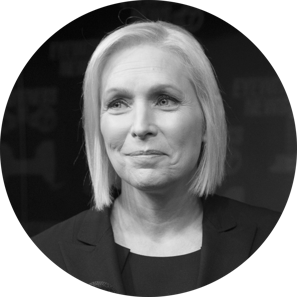
(ary Altaffer/ AP)KIRSTEN GILLIBRAND
Who is she?
Gillibrand has been a senator from New York since 2009, replacing Hillary Clinton. Before that, she served in the U.S. House.
Is she running?
Yes. She announced her exploratory committee on The Late Show With Stephen Colbert on January 15 and also in this kind of weird video, which feels like a joint marketing venture with Google.
Why does she want to run?
Gillibrand has emphasized women’s issues, from sexual harassment in the military and more recent #MeToo stories to equal pay, and her role as a mom is central in her announcement video. Once a fairly conservative Democrat, she has moved left in recent years.
Who wants her to run?
Gillibrand could have a fairly broad appeal among mainstream Democratic voters, and she hopes that her time representing upstate New York gives her an advantage with nonurban voters. She has, however, earned the enmity of Clintonworld for her critiques of Bill.
Can she win the nomination?
Perhaps. Coming from New York, she has a fundraising and media leg up.
What else do we know?
Sometimes people say she’s a little boring, but do they realize she went on Desus & Mero?
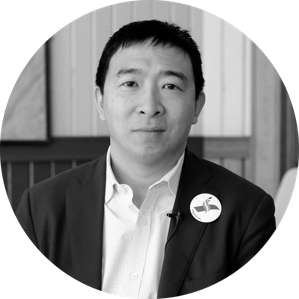
(JOSHUA LOTT / AFP / Getty)ANDREW YANG
Who is he?
Yang is <checks Google> a tech entrepreneur who created the test-preparation company Manhattan Prep and then Venture for America, which tries to incubate start-ups outside New York and the Bay Area, and which is based in New York.
Is he running?
Apparently, yes! He filed to run on November 6, 2017.
Why does he want to run?
Yang’s big idea is a $1,000 per month universal basic income for every American adult.
Who wants him to run?
His family, presumably.
Can he win the nomination?
No.

(Amy Harris / Invision / AP)MARIANNE WILLIAMSON
Who is she?
If you don’t know the inspirational author and speaker, you know her aphorisms (e.g., “Our deepest fear is not that we are inadequate. Our deepest fear is that we are powerful beyond measure.”).
Is she running?
Yes. She announced her candidacy on January 28.
Why does she want to run?
It’s a little tough to say. She writes on her website, “My campaign for the presidency is dedicated to this search for higher wisdom.” She criticized Hillary Clinton for coziness with corporate interests in 2016, and she ran for the U.S. House in 2014.
Who wants her to run?
Williamson has a lot of fans, but whether they really want her as president is another question.
Can she win the nomination?
Stranger things have happened, but no.
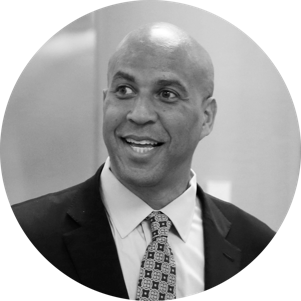
(Joshua Roberts / Reuters)CORY BOOKER
Who is he?
A senator from New Jersey, he was previously the social-media-savvy mayor of Newark.
Is he running?
Yes. He launched his campaign on February 1.
Why does he want to run?
In the Senate, Booker has been big on criminal-justice reform, including marijuana liberalization. He has recently embraced progressive ideas including Medicare for All and some sort of universal nest egg for children.
Who wants him to run?
He’ll aim for Obama-style uplift and inspiration to attract voters. Booker has previously been close to Facebook’s Mark Zuckerberg and to Wall Street, both of which could be a liability in a Democratic primary.
Can he win the nomination?
Possibly.

(Jeff Roberson / AP)JOE BIDEN
Who is he?
Don’t play coy. You know the former vice president, Delaware senator, and recurring Onion character.
Is he running?
Even Biden doesn’t know, though he says he’ll decide soon.
Why does he want to run?
Biden has wanted to be president since roughly forever, and he thinks he might be the best bet to win back blue-collar voters and defeat President Trump in 2020. (Trump reportedly agrees.) But Biden seems reluctant to end his career with a primary loss, knows he’s old (he’ll turn 78 right after Election Day 2020), and is possibly out of step with the new Democratic Party.
Who wants him to run?
If you believe the polls, he’s ahead of the rest of the Democratic pack. It’s not clear that you should really believe the polls at this point in the race.
Can he win the nomination?
It’s possible. Being Barack Obama’s vice president gave Biden a fresh glow. Then again, we’ve seen him run for president twice before, and not very effectively.

(Department of Labor)JOHN HICKENLOOPER
Who is he?
Hickenlooper was the governor of Colorado until January, and previously held the most Colorado trifecta of jobs imaginable: mayor of Denver, geologist, and brewery owner.
Is he running?
Basically. “We’re beyond mulling,” he told the Associated Press in December 2018. He even told a waitress in New Hampshire he was running, but then backtracked.
Why does he want to run?
Hickenlooper brands himself as an effective manager and deal maker who has governed effectively in a purple state while still staying progressive. He’s said he thinks the Democratic field could be too focused on grievance and not enough on policy.
Who wants him to run?
Hard to say. Hickenlooper’s aw-shucks pragmatism plays well with pundits, but he doesn’t have much of a national profile at this point.
Can he win the nomination?
Maybe, but Hickenlooper might be too business-friendly (and just plain friendly) to succeed in this primary.

(Mary Schwalm / AP)JAY INSLEE
Who is he?
Inslee is a second-term governor of Washington, and was previously in the U.S. House.
Is he running?
He sure sounds like it, but hasn’t declared.
Why does he want to run?
Climate change. That’s been Inslee’s big issue as governor, and it would be at the center of his campaign for president, too.
Who wants him to run?
A campaign would presumably attract environmentalist support, and he hopes that his time as chair of the Democratic Governors Association would help, though he’s already hit some turbulence in New Hampshire.
Can he win the nomination?
It’s a very long shot.

(Simon Dawson / Reuters)MIKE BLOOMBERG
Who is he?
The billionaire former mayor of New York, Bloomberg is a Democrat-turned-Republican-turned-independent-turned-Democrat-again.
Is he running?
Not officially, but he told the Associated Press last year that he thought the latest he could decide was February.
Why does he want to run?
For starters, he is convinced that he’d be better and more competent at the job than anyone else. A Bloomberg bid would likely center on his pet issues of gun control, climate change, and fighting the more fiscally liberal wing of the Democratic Party tooth and silver-plated nail.
Who wants him to run?
What, is his considerable ego not enough? Though his tenure as mayor is generally well regarded, it’s unclear what Bloomberg’s Democratic constituency is beyond other wealthy, socially liberal and fiscally conservative types, and it’s not as if he needs their money to run.
Can he win the nomination?
Probably not. Bloomberg has also previously toyed with an independent run, but says that would only help Trump in 2020.
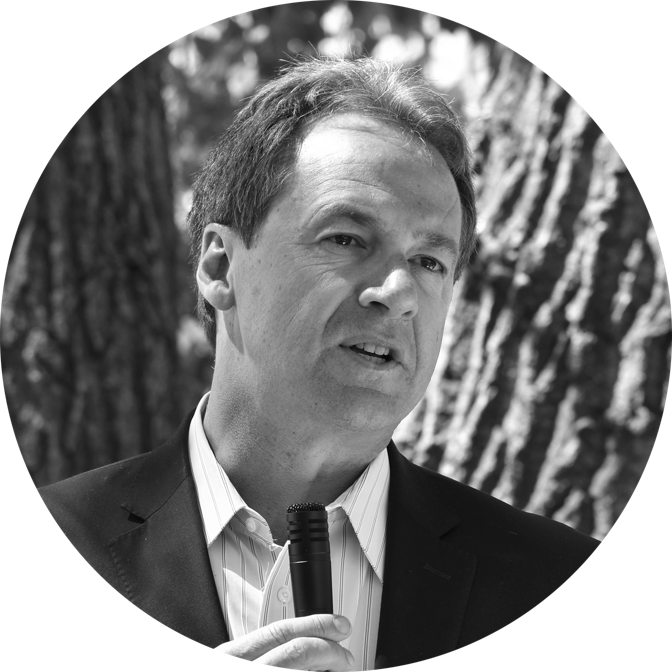
(Matthew Brown / AP)STEVE BULLOCK
Who is he?
Bullock is the governor of Montana, where he won reelection in 2016 even as Donald Trump won the state.
Is he running?
Maybe. In August, he said in Iowa, “I do have a story of how I’ve been able to bring people together, and I think that’s in part what our country desperately needs.”
Why does he want to run?
Bullock would portray himself as a candidate who can win in Trump country and get things done across the aisle. He’s also been an outspoken advocate of campaign-finance reform.
Who wants him to run?
Unclear. The Great Plains and Mountain West aren’t a traditional base for national Democrats.
Can he win the nomination?
Maybe, but it’s an outside chance.
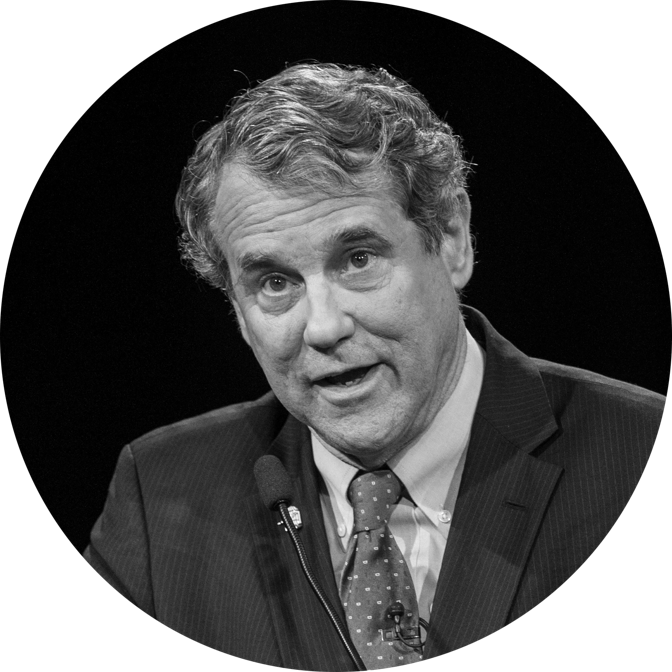
(Phil Long / Reuters)SHERROD BROWN
Who is he?
By statute, I am required to mention the senator from Ohio’s tousled hair, rumpled appearance, and gravelly voice.
Is he running?
Not yet, but he is seriously exploring the idea.
Why does he want to run?
Brown’s campaign would be focused on workers and inequality. He’s somewhat akin to Bernie Sanders, but his progressivism is of the midwestern, organized-labor variety, and he thinks he can win blue-collar voters in the Midwest while still pushing a strongly liberal platform.
Who wants him to run?
Leftist Democrats who think Sanders is too old and Elizabeth Warren too weak a candidate; lots of dudes in union halls in Northeast Ohio.
Can he win the nomination?
Possibly.
What else do we know?
Like Warren, Brown has a very good dog.
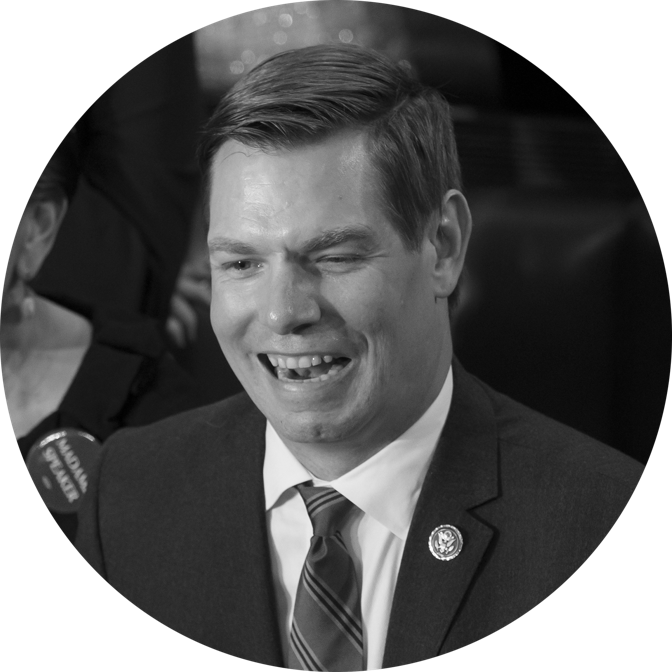
(J. Scott Applewhite / AP)ERIC SWALWELL
Who is he?
Swalwell, who is 38, is a U.S. representative from California’s Bay Area.
Is he running?
He said in November that he was seriously considering it and would decide soon. A source told Politico it was a sure thing.
Why does he want to run?
Swalwell says the Democratic Party needs fresh blood. “We can’t count on the same old leaders to solve the same old problems,” he told The Mercury News. “It’s going to take new energy and new ideas and a new confidence to do that.”
Who wants him to run?
Swalwell’s seat on the House Intelligence Committee has made him a prominent Trump persecutor, but it’s still a bit of a mystery.
Can he win the nomination?
No? Let’s go with no.
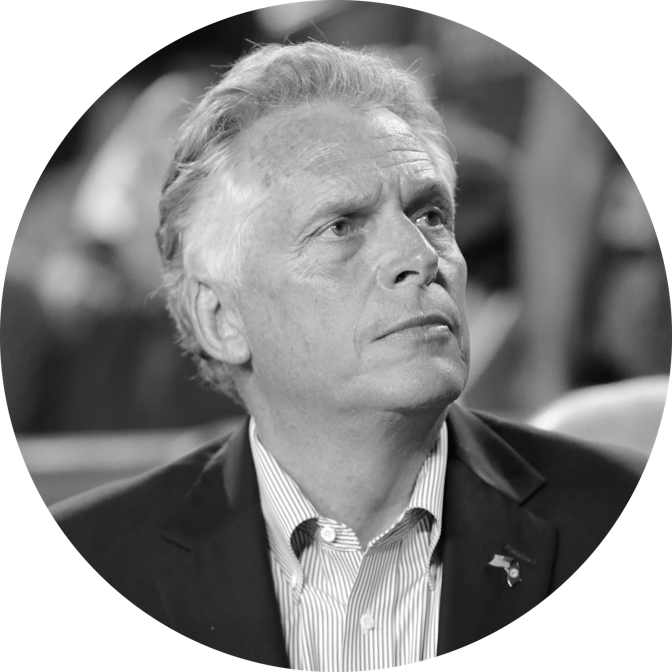
(Mark Tenally / AP)TERRY MCAULIFFE
Who is he?
Once known primarily as a close friend of Bill Clinton’s and a Democratic fundraising prodigy, McAuliffe reinvented himself as the governor of Virginia from 2014 to 2018.
Is he running?
He told CNN on February 3 that he’d “like to” run, but hasn’t decided yet.
Why does he want to run?
McAuliffe holds up his governorship as proof that he can be a problem-solver and deal maker across the aisle, and his Clintonesque politics would be a contrast to many of the candidates in the field.
Who wants him to run?
It’s hard to say. McAuliffe’s tenure in office quieted some doubters, but the Clintons—both the people and their centrist policy approach—are out of style in the Democratic Party.
Can he win the nomination?
Probably not.

(Jonathan Bachman / Reuters)TIM RYAN
Who is he?
The Ohioan is a member of the House, representing Youngstown and America’s greatest city, Akron.
Is he running?
Not now, but he is toying with the idea and visiting Iowa and New Hampshire.
Why does he want to run?
Ryan is a classic Rust Belt Democrat and friend of labor, and he’s concerned about the fate of manufacturing. He is also an outspoken critic of Democratic leadership, mounting a quixotic challenge to Nancy Pelosi in 2017.
Who wants him to run?
Ryan comes from a part of Ohio that traditionally votes Democratic but swung to Trump, and he’d have supporters there.
Can he win the nomination?
Probably not. Members of the House seldom win the nomination; he’s got little national profile; and he might be competing against another Northeast Ohio Democrat with an overlapping set of concerns, Sherrod Brown.
What else do we know?
He’s big on meditation.
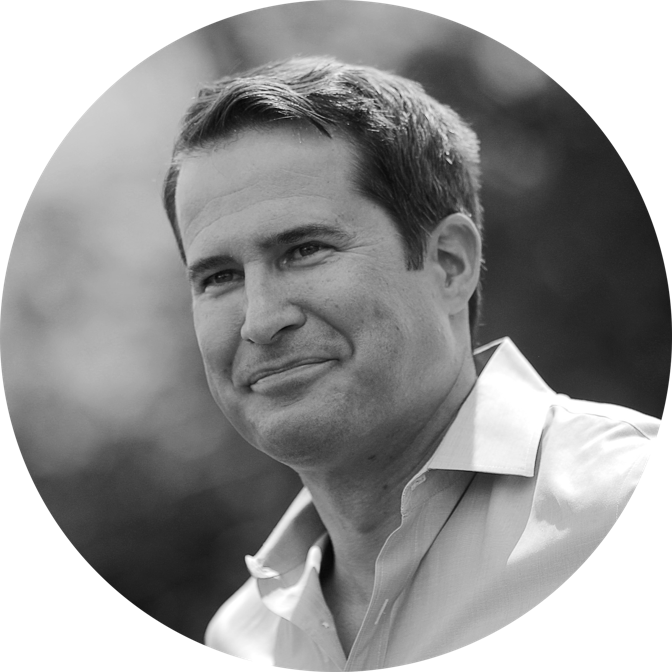
(Brian Snyder / Reuters)SETH MOULTON
Who is he?
A third-term congressman from Massachusetts, Moulton graduated from Harvard, then served in the Marines in Iraq.
Is he running?
He says he’s thinking about it.
Why does he want to run?
In an interview with BuzzFeed, he said he felt the Democratic Party needs younger leaders and, alluding to his military career, “someone ... for whom standing up to a bully like Donald Trump isn’t the biggest challenge he or she has ever faced in life.”
Who wants him to run?
That’s not clear. With his sparkling resume and movie-star looks, Moulton has grabbed a lot of attention, but he doesn’t have an obviously strong constituency, and a rebellion against Nancy Pelosi’s leadership after the 2018 election fizzled.
Can he win?
It’s hard to say, but it’s inauspicious. Moulton is an untested campaigner outside of the House, and he wouldn’t even be the first young veteran to jump in, after Pete Buttigieg.
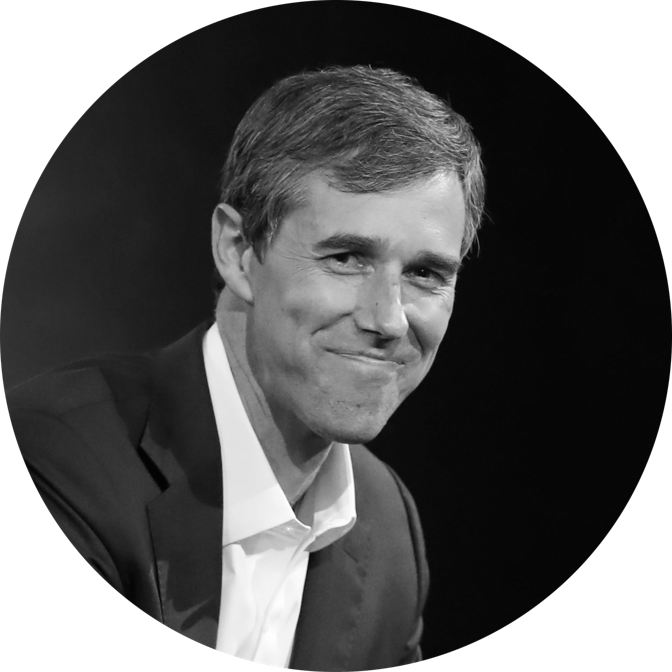
(Kathy Willens / AP)BETO O’ROURKE
Who is he?
The man, the myth, the legend, the former U.S. representative from El Paso and Democratic candidate for Senate in Texas.
Is he running?
Not right now. O’Rourke seems genuinely torn about whether to try to capitalize on his election-losing-but-attention-winning 2018 Senate run and says he’ll decide by the end of February.
Why does he want to run?
O’Rourke is trying to figure that out. He’s young, hip, and inspirational, like Obama; like Obama, his reputation is perhaps more liberal than his voting record.
Who wants him to run?
A lot of livestream watchers and thirsty tweeters, a coterie of ex–Obama aides, and a bunch of operatives running the Draft Beto campaign.
Can he win the nomination?
Maybe, but don’t bet the farm on it.
What else do we know?
This video is very important.

(Samantha Sais / Reuters)MICHAEL BENNET
Who is he?
The Coloradan was appointed to the Senate in 2009 and has since won reelection twice.
Is he running?
Not yet, but he sounds like he might. “We’ve got a million people that are going to run, which I think is great,” he said on Meet the Press on February 10. “I think having one more voice in that conversation that’s focused on America’s future, I don’t think would hurt.”
Why does he want to run?
Like his fellow Rocky Mountain State Democrat John Hickenlooper, Bennet presents himself as someone with experience in business and management who knows how to work with Republicans.
Who wants him to run?
Probably some of the same people who want Hickenlooper to run. Bennet gained new fans with a viral video of his impassioned rant about Ted Cruz during the January 2019 government shutdown.
Can he win?
Perhaps, but he’s got a crowded lane and only a small national profile.

(Lawrence Bryant / REuters)STACEY ABRAMS
Who is she?
Abrams ran unsuccessfully for governor of Georgia in 2018, and was previously the Democratic leader in the state house.
Is she running?
At the moment, it seems more likely she’ll run for U.S. Senate against David Perdue in 2020, but she could still jump in.
Why does she want to run?
Throughout her career, Abrams has focused on bread-and-butter issues like criminal-justice reform and education, and since losing a 2018 election stained by problems with ballot access, she’s made voting rights a special focus.
Who wants her to run?
Abrams has drawn excitement from young Democrats, the liberal wing of the party, and African Americans. Her rebuttal to President Trump’s 2019 State of the Union address won her new fans, and former Obama aide Dan Pfeiffer says she should run.
Can she win?
Maybe.
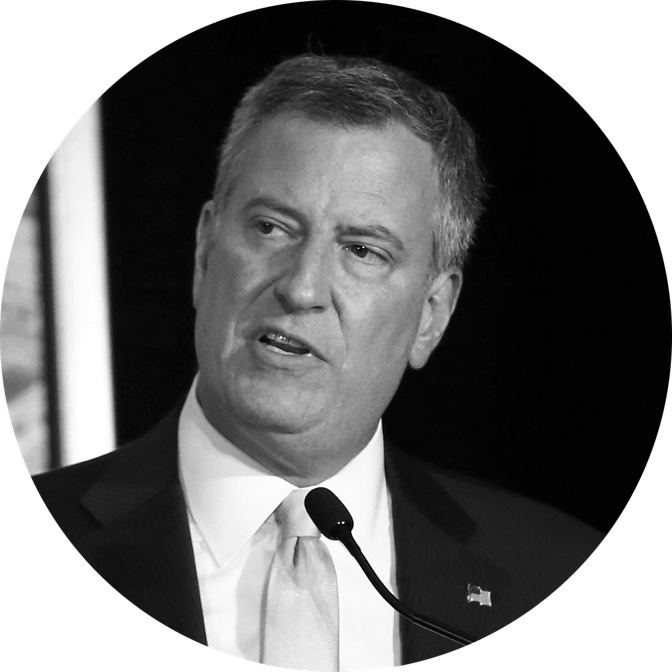
(Mike Segar / Reuters)BILL DE BLASIO
Who is he?
The mayor of New York City.
Is he running?
No, but he hasn’t ruled it out, either.
Why does he want to run?
De Blasio was the harbinger of the Democratic Party’s leftward shift on economic issues, and they’d be at the center of his campaign, though the movement seems to have left him behind a bit.
Who wants him to run?
That’s precisely the problem. De Blasio’s term as mayor has been a little bumpy, and his attempts to build a national profile haven’t gotten far.
Can he win the nomination?
Doubtful.
What else do we know?
De Blasio would probably be the tallest candidate since Bill Bradley, in 2000. Both men are 6 foot 5.
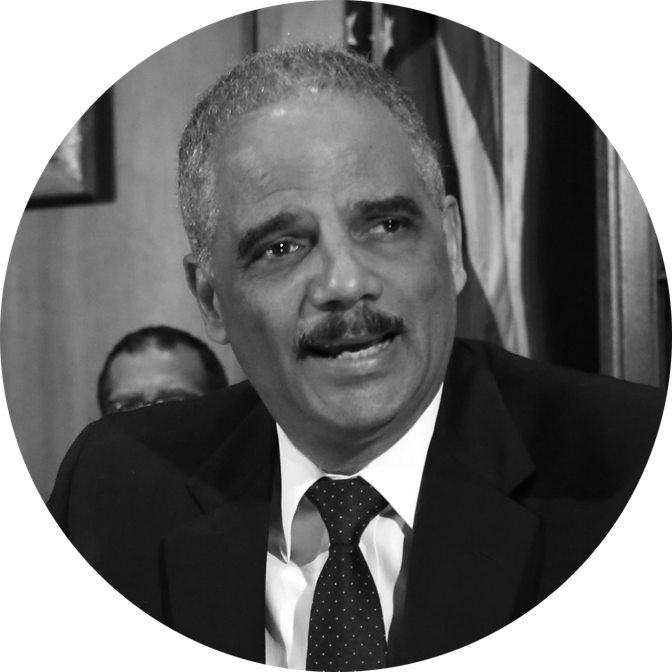
(Yuri Gripas / Reuters)ERIC HOLDER
Who is he?
Holder was the U.S. attorney general from 2009 to 2015, and he’s currently leading a Democratic redistricting initiative with help from some retiree named Barack Obama.
Is he running?
No, but in July he answered a question on the topic by saying, “Am I interested in it? Yeah, I’m interested!” He says he’ll decide in March.
Why does he want to run?
Holder has three big areas of interest: redistricting, civil rights, and beating Donald Trump by all means necessary.
Who wants him to run?
Tough to say. Obamaworld isn’t really lining up behind him, and he’s never held elected office, despite a successful Washington career.
Can he win the nomination?
Probably not.

(Faith Ninivaggi / Reuters)MITCH LANDRIEU
Who is he?
Landrieu served as the mayor of New Orleans from 2010 to 2018. He was previously Louisiana’s lieutenant governor.
Is he running?
It seems unlikely. “Probably not, but if I change my mind, you’re going to be the first to know,” he told the New York Times editor Dean Baquet in December.
Why does he want to run?
Like the other mayors contemplating a run, Landrieu considers himself a problem-solver. He’s also become a campaigner for racial reconciliation, taking down Confederate monuments in New Orleans, and staking a claim for progressivism in the Deep South.
Who wants him to run?
Not clear.
Can he win the nomination?
Probably not, especially if he doesn’t run.

(Jeenah Moon / Reuters)ANDREW CUOMO
Who is he?
Cuomo is the governor of New York. He was formerly the secretary of housing and urban development under Bill Clinton.
Is he running?
No. Though he's long toyed with the idea, Cuomo said in November 2018, "I am ruling it out." Then again, his father was indecisive about running for president, too.
Why does he want to run?
One can adopt a Freudian analysis related to his father's unfinished business, or one can note that Cuomo thinks he's got more management experience and success, including working with Republicans, than any Democratic candidate.
Who wants him to run?
Practically no one. Cuomo's defenders bristle that he doesn't get enough credit, but his work with Republicans has infuriated Empire State Democrats without winning any real GOP friends.
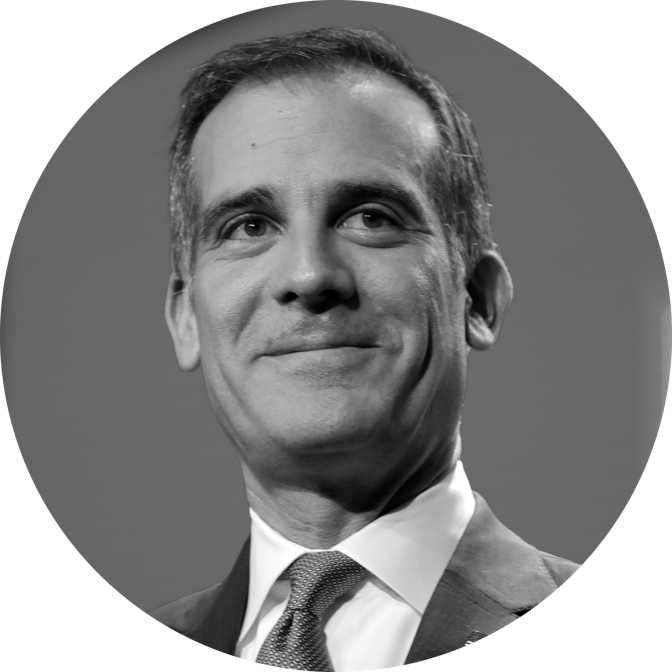
(Yuri Gripas / Reuters)ERIC GARCETTI
Who is he?
Garcetti is the mayor of Los Angeles.
Is he running?
No. Garcetti flirted with the idea, visiting South Carolina and naming a hypothetical Cabinet full of mayors, but said on January 29 that he would not run.
Why did he want to run?
Garcetti’s pitch was that mayors actually get things done and that his lack of experience in Washington was a positive.
Who wanted him to run?
Garcetti was reelected in a landslide in 2017, but he had no apparent national constituency.

(Andrew Harnik / AP)HILLARY CLINTON
Who is she?
Come on.
Is she running?
No, but until she issues a Shermanesque denial signed in blood—or the filing deadline passes—the rumors won’t die.
Why does she want to run?
She doesn’t.
Who wants her to run?
Pundits, mostly.
Can she win the nomination?
See above.

(Mike Blake / Reuters)MICHAEL AVENATTI
Who is he?
Stormy Daniels’s lawyer
Is he running?
Nope nope nope nope.
Why did he want to run?
Attention, power, self-aggrandizement
Who wanted him to run?
Some very loud, very devoted fans.
Could he have won the nomination?
No, and his comment to Time that the nominee “better be a white male” was the final straw.
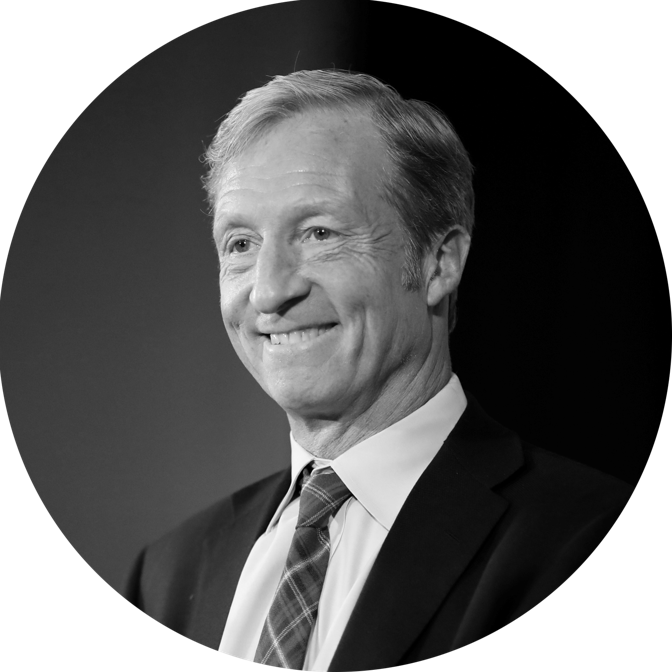
(Matthew Putney / Reuters)TOM STEYER
Who is he?
A retired California hedge-funder, Steyer has poured his fortune into political advocacy on climate change and flirted with running for office.
Is he running?
No. He announced on January 9 that he would sit the race out.
Why did he want to run?
Impeachment, baby.
Who wanted him to run?
There must be some #Resistance faction out there that did.
Could he have won the nomination?
Nope.
REPUBLICANS

(Leah Millis / Reuters)DONALD TRUMP
Who is he?
Really?
Fine. Is he running?
Yes. He filed for reelection the day of his inauguration, though some speculate that he might decide not to follow through.
Why does he want to run?
Build the wall, Keep America Great, etc.
Who wants him to run?
Consistently about 35 to 40 percent of the country; a small majority consistently says he should not.
Can he win the nomination?
Yes. While his low approval ratings overall have stoked talk of a primary challenge, Trump remains very popular among Republican voters, and as president has broad power to muscle the GOP process to protect himself.
What else do we know?
There is nothing else new and interesting to know about Trump. You’ve made your mind up already, one way or another.

(Stephan Savoia / AP)WILLIAM WELD
Who is he?
Weld, a former Justice Department official, was the governor of Massachusetts from 1991 to 1997 and was the Libertarian Party’s vice-presidential nominee in 2016.
Is he running?
Yes. Weld announced plans to form an exploratory committee on February 15.
Why is he running?
Calling President Trump “unstable,” Weld said, “I think our country is in grave peril and I cannot sit any longer quietly on the sidelines.”
Who wants him to run?
Weld always inspired respect from certain quarters, and the 2016 Libertarian ticket did well by the party’s standards, but Weld’s unorthodox politics and hot-and-cold relationship with the GOP probably don’t help his support.
Can he win the nomination?
No.

(Elizabeth Frantz / Reuters)JOHN KASICH
Who is he?
Kasich recently finished up two terms as governor of Ohio, previously served in the U.S. House, and ran in the 2016 GOP primary.
Is he running?
Not at the moment. On December 23, he told Fox News’s Chris Wallace, “I’m not trying to be coy. We are seriously looking at it.” Then, on January 15, he signed on as a CNN contributor, which is either a sign he’s decided against or a clever way to get airtime.
Why does he want to run?
Kasich has long wanted to be president—he ran, quixotically, in 2000. But Kasich has styled himself as a vocal Trump critic, and sees himself as an alternative to the president who is both truer to conservative principles and more reliable and moral.
Who wants him to run?
Maybe some dead-end never-Trump conservatives. It’s tough to say.
Can he win the nomination?
He doesn’t think so. Kasich previously ruled out an independent or third-party run, but has since reopened that door.
What else do we know?
John Kasich bought a Roots CD and hated it so much, he threw it out his car window. John Kasich hated the Coen brothers’ classic Fargo so much, he tried to get his local Blockbuster to quit renting it. George Will laughed at him. John Kasich is the Bill Brasky of philistinism, but John Kasich probably hated that skit, too.

(Patrick Semansky / AP)LARRY HOGAN
Who is he?
In November, Hogan became the first Republican to be reelected as governor of Maryland since 1954.
Is he running?
No, and people close to him doubt he will, but he has pointedly not ruled it out.
Why does he want to run?
Hogan is a pragmatic, moderate Republican who has won widespread acclaim in a solidly Democratic state—in other words, everything Trump is not.
Who wants him to run?
Never-Trump conservatives; whatever the Republican equivalent of a “good government” type is.
Can he win the nomination?
As long as Trump is running, no.
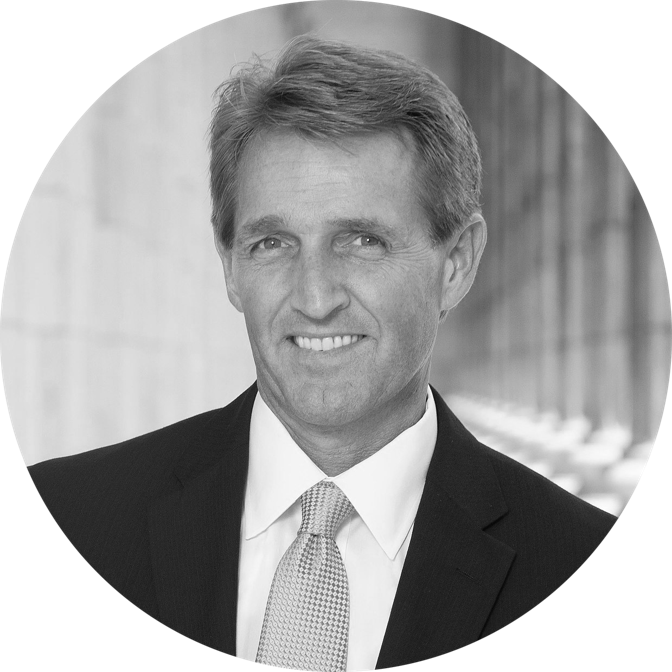
(Official Senate PhotO)JEFF FLAKE
Who is he?
The Arizonan, a former U.S. House member, decided not to run for reelection to the Senate in 2019.
Is he running?
No. When he took a contributor role with CBS on January 23, he said he was not running.
Why did he want to run?
Starting in 2016, Flake was perhaps Trump’s most outspoken critic among elected Republicans, lambasting the president as immoral, unserious, and unconservative.
Who wanted him to run?
Liberal pundits.
Could he have won the nomination?
No. Flake retired because he didn’t even think he could win the Republican Senate nomination.
INDEPENDENTS

(JASON REDMOND / Reuters)HOWARD SCHULTZ
Who is he?
That guy who used to sell you over-roasted coffee. Schultz stepped down as CEO of Starbucks in 2018.
Is he running?
Maybe. Schultz says he’s exploring it, but after a wave of backlash to his candidacy, his adviser Bill Burton said on January 29 that he wouldn’t decide until at least mid-2019.
Why does he want to run?
Personal pique over Representative Alexandria Ocasio-Cortez’s support for a 70 percent marginal tax rate. No, seriously. Schultz has offered some vague platitudes about centrist ideas and bringing the country together, but most of it aligns with standard Democratic positions.
Who wants him to run?
Donald Trump.
Can he win the nomination?
The great thing about being a billionaire self-funder as an independent is that you don’t have to win a nomination. The downside is that you still have to win votes eventually.

(Darrin Zammit Lupi / Reuters)JOHN MCAFEE
Who is he?
He's the guy who made your antivirus program-turned-international fugitive-turned-unsuccessful 2016 Libertarian presidential candidate. A typical politician, basically.
Is he running?
He says he's going to either vie for the Libertarian nomination again or run as an independent, though it's probably worth regarding what he says with some skepticism.
Why does he want to run?
To promote cryptocurrency, brah. “See, I don’t want to be president,” he told a crypto trade publication in November 2018. “I couldn’t be ... no one’s going to elect me president, please God. However, I’ve got the right to run.”
Who wants him to run?
Rubberneckers, disaster enthusiasts.
Can he win the nomination?
“No one’s going to elect me president, please God.”
What else do we know?
You want to see what it's like as the opposite sex for three hours? What being kissed by God feels like? You want the infinite experience of freedom? Knowledge of yourself? Eroticism that incinerates you? A simple good time? Forgetfulness? He's your man.






















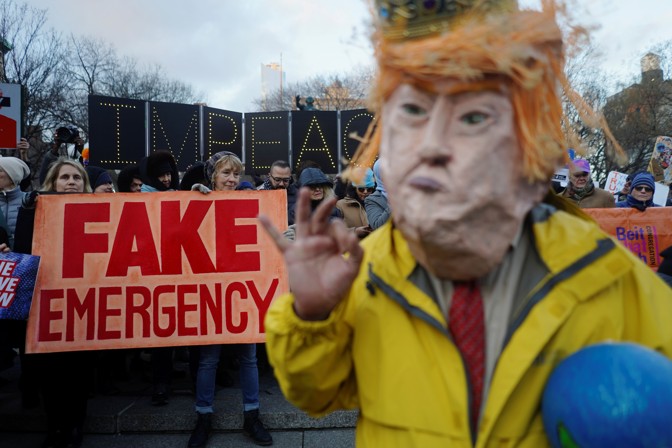
 Karl Lagerfeld appears with models at the end of his Spring/Summer 2015 women's ready-to-wear collection for Chanel during Paris Fashion Week in 2014. (Gonzalo Fuentes / Reuters)
Karl Lagerfeld appears with models at the end of his Spring/Summer 2015 women's ready-to-wear collection for Chanel during Paris Fashion Week in 2014. (Gonzalo Fuentes / Reuters) Getting to the moon required attempting “300 different homework problems,” according to the University College London economist Mariana Mazzucato. (NASA)
Getting to the moon required attempting “300 different homework problems,” according to the University College London economist Mariana Mazzucato. (NASA) Sarah Fiddyment (left) and Matthew Collins looking at parchment with conservator Antoinette Curtis at the Norfolk Record Office (Matthew Collins)
Sarah Fiddyment (left) and Matthew Collins looking at parchment with conservator Antoinette Curtis at the Norfolk Record Office (Matthew Collins) (Yuri Gripas / Reuters)BERNIE SANDERS
(Yuri Gripas / Reuters)BERNIE SANDERS (Aaron P. Bernstein / REUTERS)AMY KLOBUCHAR
(Aaron P. Bernstein / REUTERS)AMY KLOBUCHAR (Jonathan Bachman / Reuters)ELIZABETH WARREN
(Jonathan Bachman / Reuters)ELIZABETH WARREN (Dimitrios Kambouris)KAMALA HARRIS
(Dimitrios Kambouris)KAMALA HARRIS (City of South Bend, IN)PETE BUTTIGIEG
(City of South Bend, IN)PETE BUTTIGIEG (DEPartment of Housing & Urban Development)JULIÁN CASTRO
(DEPartment of Housing & Urban Development)JULIÁN CASTRO (KC McGinnis / Reuters)JOHN DELANEY
(KC McGinnis / Reuters)JOHN DELANEY (Marco Garcia / AP)TULSI GABBARD
(Marco Garcia / AP)TULSI GABBARD (ary Altaffer/ AP)KIRSTEN GILLIBRAND
(ary Altaffer/ AP)KIRSTEN GILLIBRAND (JOSHUA LOTT / AFP / Getty)ANDREW YANG
(JOSHUA LOTT / AFP / Getty)ANDREW YANG (Amy Harris / Invision / AP)MARIANNE WILLIAMSON
(Amy Harris / Invision / AP)MARIANNE WILLIAMSON (Joshua Roberts / Reuters)CORY BOOKER
(Joshua Roberts / Reuters)CORY BOOKER (Jeff Roberson / AP)JOE BIDEN
(Jeff Roberson / AP)JOE BIDEN (Department of Labor)JOHN HICKENLOOPER
(Department of Labor)JOHN HICKENLOOPER (Mary Schwalm / AP)JAY INSLEE
(Mary Schwalm / AP)JAY INSLEE (Simon Dawson / Reuters)MIKE BLOOMBERG
(Simon Dawson / Reuters)MIKE BLOOMBERG (Matthew Brown / AP)STEVE BULLOCK
(Matthew Brown / AP)STEVE BULLOCK (Phil Long / Reuters)SHERROD BROWN
(Phil Long / Reuters)SHERROD BROWN (J. Scott Applewhite / AP)ERIC SWALWELL
(J. Scott Applewhite / AP)ERIC SWALWELL (Mark Tenally / AP)TERRY MCAULIFFE
(Mark Tenally / AP)TERRY MCAULIFFE (Jonathan Bachman / Reuters)TIM RYAN
(Jonathan Bachman / Reuters)TIM RYAN (Brian Snyder / Reuters)SETH MOULTON
(Brian Snyder / Reuters)SETH MOULTON (Kathy Willens / AP)BETO O’ROURKE
(Kathy Willens / AP)BETO O’ROURKE (Samantha Sais / Reuters)MICHAEL BENNET
(Samantha Sais / Reuters)MICHAEL BENNET (Lawrence Bryant / REuters)STACEY ABRAMS
(Lawrence Bryant / REuters)STACEY ABRAMS (Mike Segar / Reuters)BILL DE BLASIO
(Mike Segar / Reuters)BILL DE BLASIO (Yuri Gripas / Reuters)ERIC HOLDER
(Yuri Gripas / Reuters)ERIC HOLDER (Faith Ninivaggi / Reuters)MITCH LANDRIEU
(Faith Ninivaggi / Reuters)MITCH LANDRIEU (Jeenah Moon / Reuters)ANDREW CUOMO
(Jeenah Moon / Reuters)ANDREW CUOMO (Yuri Gripas / Reuters)ERIC GARCETTI
(Yuri Gripas / Reuters)ERIC GARCETTI (Andrew Harnik / AP)HILLARY CLINTON
(Andrew Harnik / AP)HILLARY CLINTON (Mike Blake / Reuters)MICHAEL AVENATTI
(Mike Blake / Reuters)MICHAEL AVENATTI (Matthew Putney / Reuters)TOM STEYER
(Matthew Putney / Reuters)TOM STEYER (Leah Millis / Reuters)DONALD TRUMP
(Leah Millis / Reuters)DONALD TRUMP (Stephan Savoia / AP)WILLIAM WELD
(Stephan Savoia / AP)WILLIAM WELD (Elizabeth Frantz / Reuters)JOHN KASICH
(Elizabeth Frantz / Reuters)JOHN KASICH (Patrick Semansky / AP)LARRY HOGAN
(Patrick Semansky / AP)LARRY HOGAN (Official Senate PhotO)JEFF FLAKE
(Official Senate PhotO)JEFF FLAKE (JASON REDMOND / Reuters)HOWARD SCHULTZ
(JASON REDMOND / Reuters)HOWARD SCHULTZ (Darrin Zammit Lupi / Reuters)JOHN MCAFEE
(Darrin Zammit Lupi / Reuters)JOHN MCAFEE
 Netflix
Netflix Cleo (Yalitza Aparicio) hugs a child after telling her employer Sofía (Marina de Tavira) about her pregnancy. (Carlos Somonte / Netflix / Everett Collection)
Cleo (Yalitza Aparicio) hugs a child after telling her employer Sofía (Marina de Tavira) about her pregnancy. (Carlos Somonte / Netflix / Everett Collection) netflix
netflix